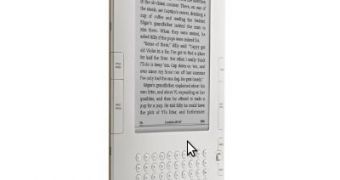With the launch of the iPad, the Kindle saw a possible competitor, as the new device is capable of operating in e-reader mode. With a slew of new tablet devices on their way, the Amazon Kindle will naturally have to bring something to the table in order to even or raise the stakes, whether on color display or another type of improvement. A recent media report from the New York Times suggests that Amazon may have already taken steps towards this end by acquiring the upstart company Touchco.
Touchco is a company that was only recently funded by a team from the New York University’s Media Research Lab. Led by Ken Perlin and Ilya Rosenberg, the team managed to create an innovative and extremely cost-effective multitouch technology that could not only detect and track an unlimited number of touch inputs, but could even detect the level of pressure applied, as well as the actual size of the touch inputs. This enabled the differentiation between objects such as a pencil and an eraser, a finger and a stylus, etc. These capabilities are already noteworthy, with an added benefit being the fact that a square foot of such sheets was supposed to only cost around $10 each.
The sheets of pressure-sensitive multitouch technology operate based on what is called the Interpolating Force-Sensitive Resistance technology, or IFSR for short. The New York Times reports that Amazon supposedly acquired Touchco and will be merging its technology and staff members with its existing Kindle division, according to “a person briefed on the deal.” Multitouch capabilities would likely help propel the Kindle, as an alternative to lowering the product's price. Amazon might also be considering adding color screens to its future generation of Kindle readers (as IFSR can be easily added to LCDs), which raises questions on the role of E Ink, the current supplier of Kindle screens.
According to Donald Norman, a professor at Northwestern University and an expert on design and engineering, the E ink display is “too slow and ponderous” for reference works and multimedia, even though it does well for reading long books. Colin Sebastian, an analyst at Lazard Capital, said that acquiring Touchco “would suggest Amazon is looking to expand its platform perhaps beyond e-readers to encompass more functionality and more content. It also could help them address some of the form-factor issues with the Kindle.”
“If touch screens were added to the Kindle or other Amazon devices, it would bring them up to date with the plethora of other screens consumers are becoming used to. Any device is at a disadvantage if it doesn’t offer it,” he added.
Among the hypotheses and occurrences that seem to support the validity of this rumor is the fact that the Toucho website has all but been shut down. Both its website and YouTube page have been left bare, with only a side-note saying, “Thank you for your interest in Touchco. As of January 2010, the company is no longer doing business.”
Predictably, Amazon spokesperson Mary Osako said that the company did not comment on speculation. As such, financial details of the deal remain unknown, if indeed the acquisition reports are genuine.

 14 DAY TRIAL //
14 DAY TRIAL //